The solo economy: Your mother’s greatest lamentation...or is it?

The solo economy: The great lamentation or a consumption powerhouse?
Southeast Asia has become a region of significant global growth in the last decade and as it has become more aligned with global trends, the way its people live has also evolved. Economic pressures, shifting cultural norms, and rising individualism are driving a new wave of consumption, centered not on families but on individuals.
Across urban centers like Jakarta, Bangkok, and Ho Chi Minh City, young people are delaying marriage and choosing to live alone, not because they have to, but because they choose to. In Indonesia, just 1.58 million couples married in 2023, down from 2.01 million in 2018, with steady declines each year. This shift is fueling one of the most overlooked lifestyle and consumption transformations in the region: the rise of the solo economy.
Asia's solo economy leads the way
The solo economy refers to the commercial and cultural impact of people living alone and spending on their own terms. Over 2 billion people globally are single, and Asia-Pacific accounts for half of all new solo households. China and South Korea—further along in this lifestyle development —offer a preview of what is to come for Southeast Asia. In China, marriages fell 20% to a record low of 6.1 million in 2024, less than half the number registered in 2013. In South Korea, one in three people now live alone—almost double the rate from a decade ago. The same pattern is observed in Southeast Asia: marriage rates are falling, and the average marriage age is increasing across markets. Solo households already account for 12% of homes in Southeast Asia and are growing at 2.4% CAGR through 2030—the fastest-growing segment in the region.
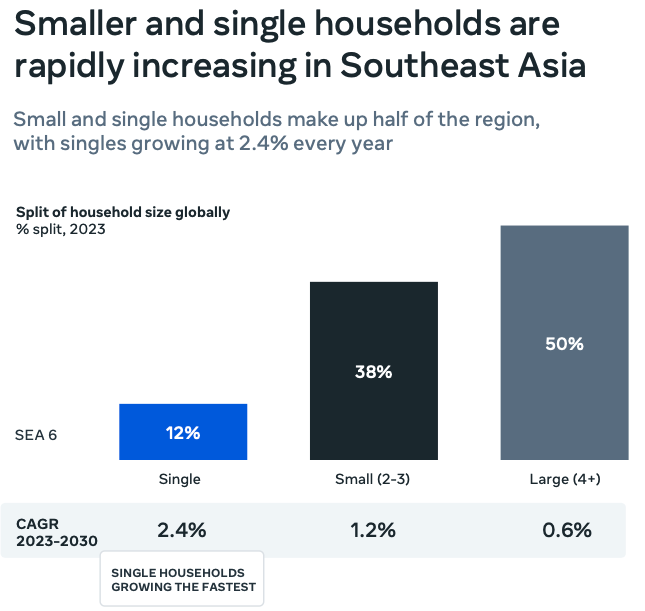 Single households grows at the fastest speed compared to Small and Large ones (SYNC SEA Report)
Single households grows at the fastest speed compared to Small and Large ones (SYNC SEA Report)
The drivers are clear. First, women across Asia are achieving higher levels of education and financial stability, making marriage less of an economic necessity. Nearly two-thirds (65%) of women in Asia say they are more financially stable than previous generations, with Vietnam (75%) and Indonesia (71%) leading the region.
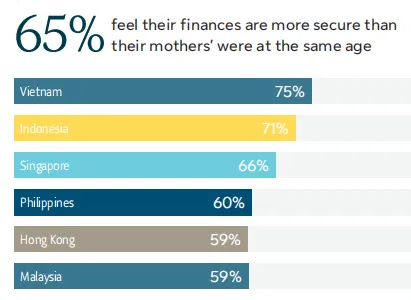 Source: “Women’s Wealth in Focus: Building Confidence and Security”Research (Sun Life)
Source: “Women’s Wealth in Focus: Building Confidence and Security”Research (Sun Life)
Second, younger generations are increasingly focused on self-fulfillment. Many are unwilling to settle just to meet traditional milestones, instead choosing careers and personal growth. Third, staying single is no longer stigmatized. Over 70% of young Singaporeans in their 20s and 30s say being unmarried and childless is more socially acceptable today. Finally, economic pressures—from rising living costs to uncertain job prospects—are pushing marriage and family formation further down the priority list.
A structural shift, not just a phase
This isn’t just a temporary reaction to rising costs or dating fatigue — it’s a structural shift driven by values, macro-economic shifts, and changing demographics. Living alone is increasingly seen as a path to independence, flexibility, and self-discovery. The share of single-person households is projected to increase to nearly 40% of total households by 2040 in Thailand, while nearly 30% for Vietnam and Singapore, a number hard to ignore.
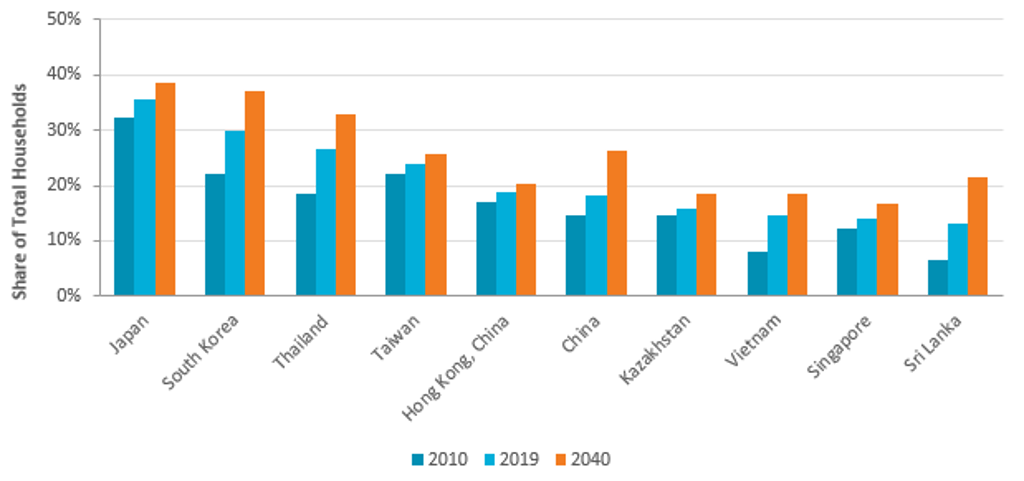 Top 10 Asia Pacific Countries with Largest Shares of Single-Person Households 2010-2040 (Euromonitor)
Top 10 Asia Pacific Countries with Largest Shares of Single-Person Households 2010-2040 (Euromonitor)
This is giving rise to three emerging consumer behaviors in the region: solo living, solo travel, and solo companionship. All rooted in one idea: "for me" consumption.
Solo living: Daily life is being rebuilt around the individual
The solo economy is reshaping how people eat, live, and consume content. No more shame in eating alone, restaurants are now providing space dedicated to solo diners. In Japan, an adjacent market, 23% of Japanese people eat out alone now, up from 18% in 2018. Delivery food service Foodpanda launched its “Meal for One” feature in 2024 across seven Asian markets, offering curated solo menus with lower delivery fees. This isn’t just portioning down – it is a fundamentally different product built for solo living behavior.
 Source: Foodpanda
Source: Foodpanda
Daily entertainment and leisure habits are also evolving. Solo consumers spend significantly more time streaming, gaming, and creating. In Japan, single-person households spend up to 3.5x more on digital content than multi-person ones. The same demand is witnessed in Southeast Asia, singles in Thailand are spending nearly twice as much per capita on experiences and leisure compared to their married counterparts. Creator infrastructure is also evolving: Korea’s video booths CHOOM, designed for filming solo dance videos, launching in Singapore, reflect the growing demand for personalized content spaces.
Housing is adapting too. Traditional apartments are often too large and expensive for one. In response, models like co-living are emerging. Singapore’s LHN Group launched Coliwoo to serve solo renters with compact studios and shared amenities. Demand for modular furniture and smart home tech is also rising, as solo residents look to maximize comfort and utility in smaller spaces. In more advanced markets, brands are already responding: Lotte Himart launched PLUX, an appliance line tailored for one- to two-person households, while Panasonic introduced SOLOTA, a compact dishwasher designed specifically for solo living in Japan.
 Source: Panasonic
Source: Panasonic
Solo travel: Premium, purposeful, and personalized
With single people being more self-sufficient financially, this has influenced how they travel, and many are choosing to do so alone. Healing resorts like Kamalaya in Koh Samui are becoming safe havens for this segment—65% of its guests are solo travelers, the majority of whom are women. Singapore and Indonesia now rank among the top five regions globally searching for “solo travel,” reflecting rising interest across Southeast Asia.
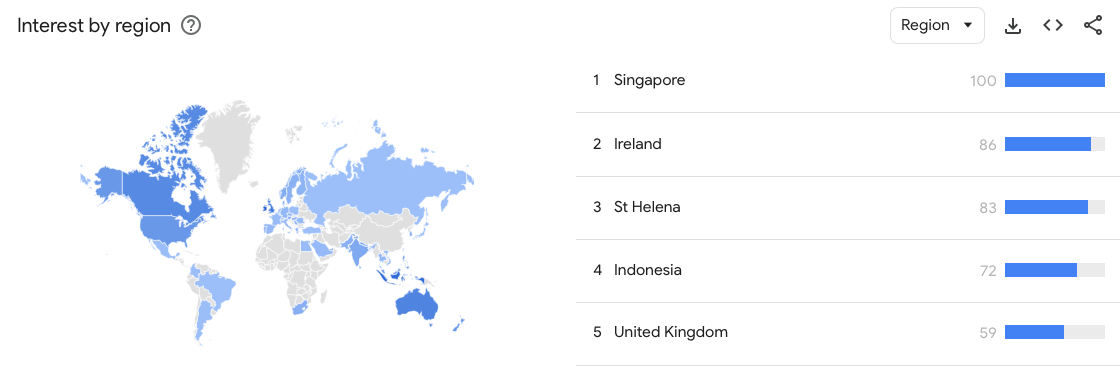 Singapore and Indonesia ranked top on Solo travel search (Google trend)
Singapore and Indonesia ranked top on Solo travel search (Google trend)
These travelers aren’t just looking for single rooms—they’re looking for meaning and purpose. Yoga retreats, farm stays, and volunteer trips are replacing traditional group tours. In Singapore, Klook’s “The Best You” campaign brings this to life through The Best You Path at Mandai Wildlife Reserve—a nature-based experience designed to encourage reflection and self-discovery in the wild. With no need to coordinate with others, solo travelers are more flexible and more willing to pay for experiences that offer value and purpose.
Travel startups are responding with matching platforms and itinerary-sharing tools that let solo travelers connect on their own terms. One example is NomadHer, a South Korea–based app building a global community for solo female travelers, with a focus on safety and empowerment. Hotels are also rolling out luxury options tailored to individuals. Aleenta Resorts in Thailand, for instance, runs structured wellness retreats, like “Mind Balance & Self-Love”, designed for individual transformation through solitude, reflection, and personal growth. The next wave of travel in Southeast Asia won’t be driven by couples or families, but by empowered individuals crafting their own journeys.
Companionship for 1: Pets are the new family
With more solo consumers opting out of marriage and parenthood, this does not mean they are self-centered or self-focused. They still want to care for something - be it pets, plants or the latest craze in Korea - rocks. Caring for something fills an emotional gap, and pets in particular, become both a companion and a family member. This shift is reallocating spending from traditional “family spending” categories. In China, the number of cats and dogs in 2024 matched the number of children under age four, and by 2030, pets are expected to outnumber them nearly two to one. In South Korea, 57% of strollers sold are now for pets, surpassing baby strollers.
Following the same trend, pet ownership is rising in Southeast Asia. Vietnam reported 12 million cats and dogs in 2024 (12% YoY growth). Thailand is home to 5 million pets, projected to grow 6% in 2025. In Malaysia, more than half of consumers already own pets, and among non-owners, 26% are considering it. The region’s pet food market is projected to reach $5.2B in 2025 and $8B by 2030, growing at 8.9% CAGR.
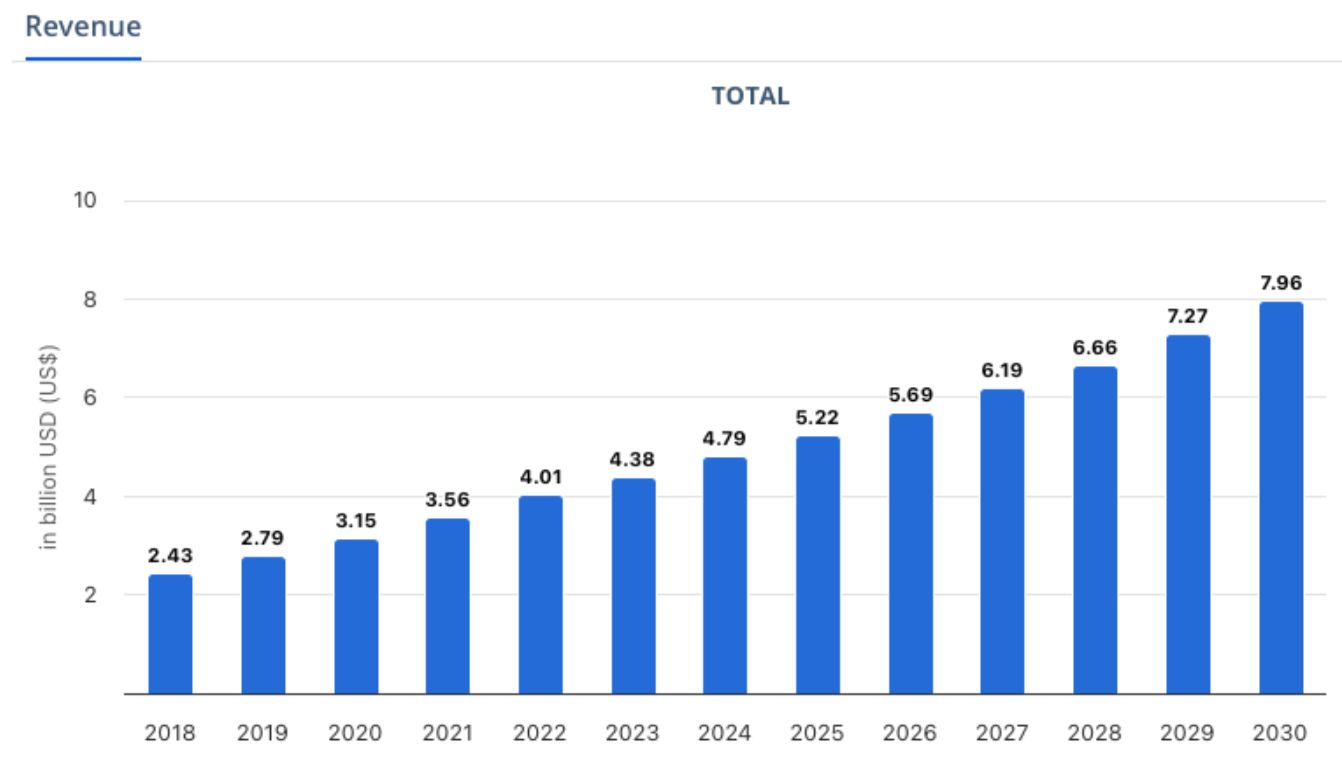 SEA’s pet food market size from 2018 to 2030 (Statista)
SEA’s pet food market size from 2018 to 2030 (Statista)
Beyond food, young single pet parents are spoiling their “fur babies” with premium supplements, tech devices, pet insurance, and even custom outfits, reflecting the fast-growing mindset of pet humanization. In the Philippines, Singapore-based Igloo partnered with GCash and Malayan Insurance to launch a pet protection plan. In Malaysia, clinics now offer acupuncture and herbal therapy for pets. In Singapore, some employers have introduced pet care leave. As pets take center stage in solo consumers' lives, businesses are racing to meet both emotional and financial demand.
The trend does not stop at animals—plant care is gaining ground as well. It is no longer just about decoration; for many solo consumers, plants have become the new pets. “Plant parents” are emotionally invested, with some even bringing sick plants to “plant hospitals”. The care economy has expanded alongside this shift, from grow lights to designer pots and subscription services. Meanwhile, in China and Korea, pet rocks are having a moment—sold in boxes with names, birth certificates, care instructions and even have MBTI matching with their “parents”. Whether it is a pothos or a pebble, these low-maintenance companions still provide comfort and emotional release, and solo consumers are finding joy in caring.
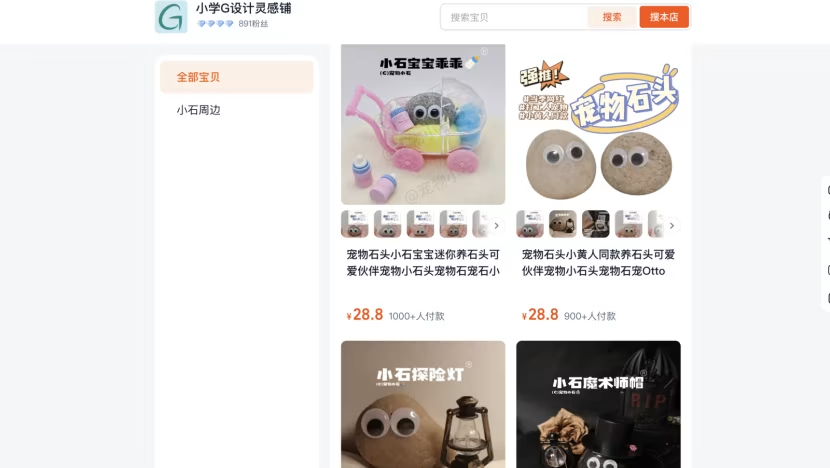 A screenshot of a shop that has sold over 1,000 pet rocks, priced between 5 and 30 yuan. (Image: Taobao/XiaoxueG Design Inspirations Store)
A screenshot of a shop that has sold over 1,000 pet rocks, priced between 5 and 30 yuan. (Image: Taobao/XiaoxueG Design Inspirations Store)
 Source: Internet
Source: Internet
Looking ahead: Designing for a solo-first world
In more mature markets like Japan and South Korea, single-person households now span all age groups and influence spending across nearly every category. Southeast Asia is earlier in the curve, but the shift is underway. Solo consumers aren’t looking for scaled-down family products, nor do they want to navigate a world built for two. Take concert ticketing: if two adjacent seats are available, a solo buyer is often blocked from purchasing just one. These consumers want solutions designed around their needs — enabling independence, personalization, and connection. From content and housing to travel and pets, solo consumers are reshaping demand. Startups serving them often benefit from strong unit economics: clear pain points, high willingness to pay, and deep emotional relevance. The biggest winners will be those who design for one, from day one.
Related Posts
SEE ALL
01 Dec 2025

14 May 2025

20 Feb 2025

01 Jul 2024

09 May 2024

11 Jan 2024
